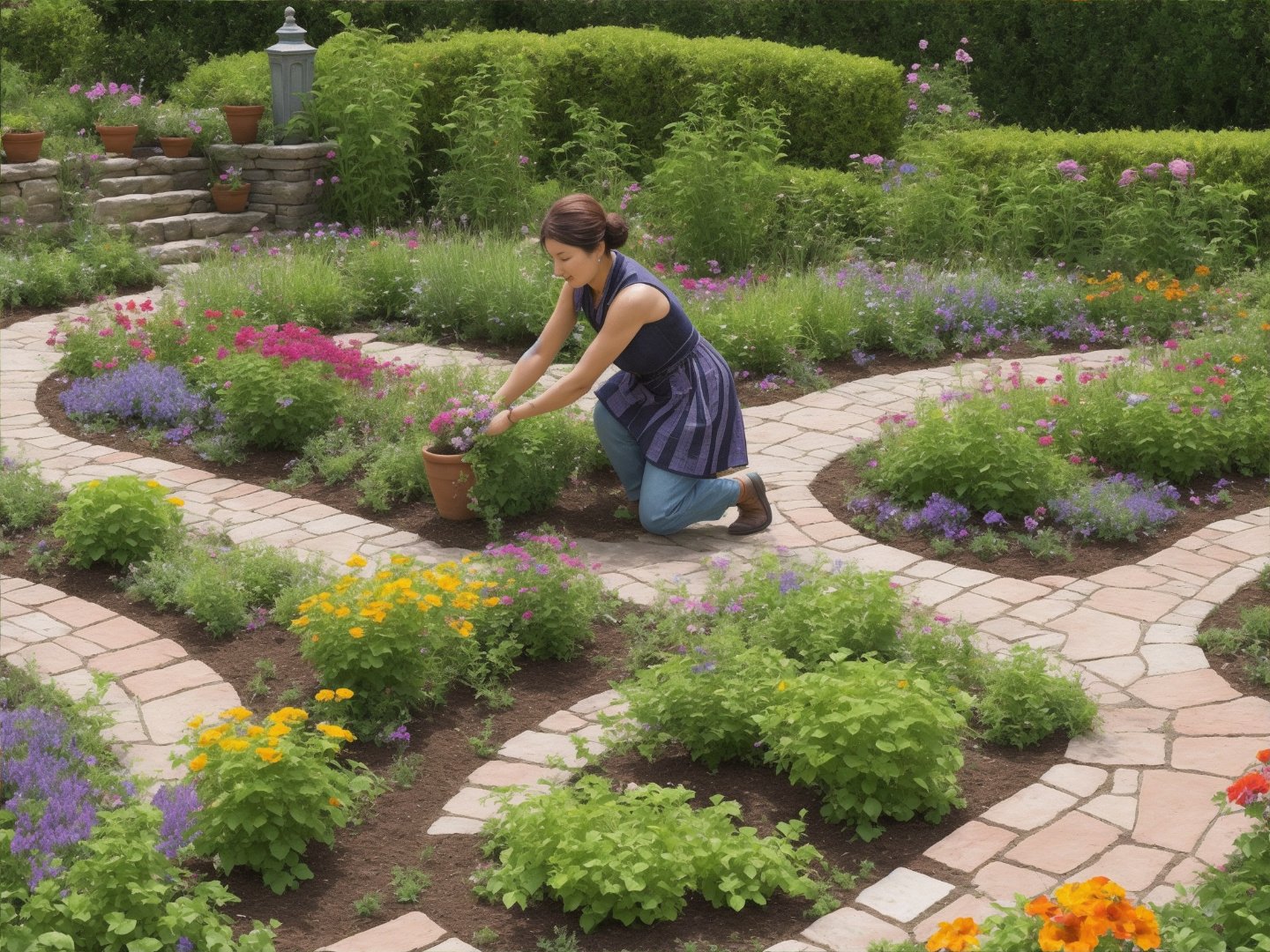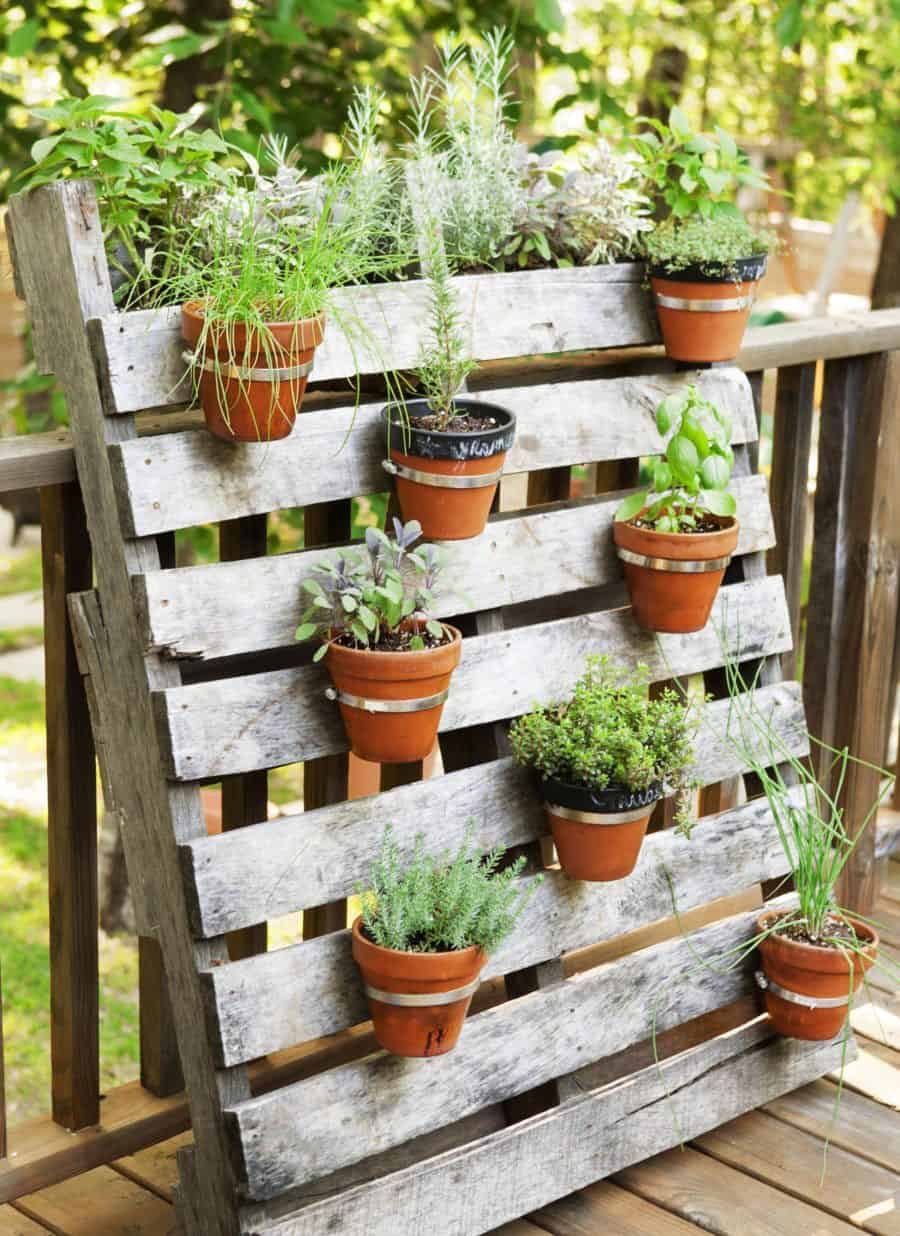Small Herb Garden Design
Making your herb garden design does have any required garden size. You can make your herb garden design to be as small as possible if you want. In fact, almost all herbs do not grow very tall and big that will require too much room in your garden. One advantage of having your own herb garden at home, may it be a small herb garden design or a big herb garden design, you can have direct access to fresh herbs every single time you will need it and you will not have to spend money for fresh herbs. Herbs may be available for sale in selected markets, but remember, herbs will usually cost you a lot.
Key Points
- Small herb gardens can be designed to fit any space, even just 1 square foot per plant.
- Pathways and containers work great for compact herb gardens.
- Allow proper spacing for air circulation and growth.
- Tailor herb selections to your culinary preferences.
- A mini herb garden provides fresh seasoning and plants easily within reach.
Size of Your Herb Garden Design
When planning a small herb garden, assess how much space you can dedicate to growing herbs. A garden bed approximately 12 feet square will provide enough room for a variety of herbs to meet a household’s seasoning needs.
However, herb gardens can be downsized to fit smaller spaces. The key is allowing adequate room for each herb plant to grow. As a general guideline, aim to give each herb at least 1 square foot of space. This ensures they have room to reach maturity size without crowding.
For very compact herb gardens, containers are a great solution. Choose containers at least 12 inches wide for each individual herb plant. This gives roots sufficient room to develop. Match pot size to the herb’s expected mature size. Mint and oregano need bigger pots than thyme and chives.
When designing a mini herb garden, scale down the number of plants according to your available space. Aim for versatile herbs you use often in cooking. Compact gardens call for strategic choices, not every herb. Thoughtful planning allows you to have a productive herb garden, no matter your constraints.
Pathway or Sidewalk Herb Garden
If you have limited yard space, incorporating herbs along pathways and sidewalks is an excellent option. Tucking herbs in along walkways creates an attractive, orderly display. Locating them in high-traffic zones also makes harvesting convenient.
For in-ground pathway plantings, leave 1 foot of space between the herbs and the walking area. This prevents accidental trampling. You can also elevate herbs in raised beds along the path’s edge.
Another approach is planting herbs in containers of varying heights lined up along a path or sidewalk. Arrange the tallest pots at the back, descending to shorter ones in front for visual appeal. Be sure to leave enough room for walking between the pots.
With creativity and proper planning, lack of yard space doesn’t preclude growing herbs. Pathways provide ideal spots for compact yet bountiful herb gardens.
Containers and Raised Bed Herb Garden Design
For small garden plots or urban settings like patios and balconies, container gardening is an excellent way to cultivate herbs. Choose containers at least 12 inches wide and deep for the roots. Make sure pots have drainage holes to prevent overwatering.
Elevating herbs in raised beds, either standalone or edged along a path, lets you control soil quality and drainage. Line beds with landscape fabric to prevent weeds. Fill with a lightweight potting mix amended with compost for nutrients. The height makes tending and harvesting easy.
When designing a container herb garden, arrange the pots artfully based on height, color and texture for visual appeal. Maintaining proper spacing allows good air circulation around the plants. With the right plants and creative design, small-space herb gardens can be bountiful and beautiful.
FAQ
What are some good herb choices for small spaces?
Great options for compact herb gardens include thyme, oregano, chives, parsley, sage, mint, basil, and rosemary.
How much space should I allow per herb plant?
Aim for at least 1 square foot of space per herb. If using containers, a 12-inch pot per herb is ideal.
What are some creative small garden design ideas?
Plant herbs in pots along a pathway, in a wagon wheel pattern, on an apartment balcony, or stacked vertically on shelves.
How often should I water a small herb garden?
Check soil daily and water when the top inch is dry. Most herbs need about 1 inch of water per week, adjusting for rainfall.
Should I amend the soil for my mini herb garden?
Yes, mixing in compost improves drainage and nutrients in compacted soil. Herbs thrive in well-draining, nutrient-rich soil.
What are the best herbs for indoor small gardens?
Great indoor herb choices are basil, parsley, oregano, thyme, sage, and mint. Provide sufficient sunlight and air circulation.
How much sunlight does a small herb garden need?
Most herbs require at least 6 hours of direct sunlight daily. South or west-facing spots are ideal. Supplement with grow lights if needed.
Related posts:





